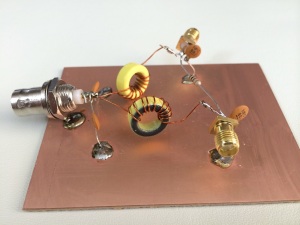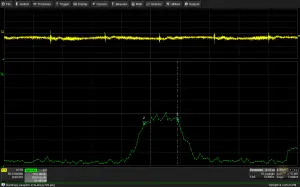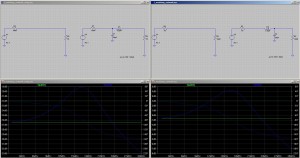Electronics 101
Fundamental electronics knowledge and basic articles (not only) for beginners.
Lumped-Element Wilkinson Splitter / Combiner Design

This article will show how to design a 2-way equal split lumped-element Wilkinson power divider with 50 Ω impedance for 28 MHz. Lots of big words; reread just to make sure you read it correctly and you don’t have to read through this article just to realize it’s not what you need. The Wilkinson works both as splitter and combiner.
Measuring filter response using a noise source

If you own a spectrum analyzer with tracking generator or, even better, a good vector network analyzer, measuring the frequency response of a filter is fairly easy. But there is one old approach using a noise source that can turn any oscilloscope with a FFT spectrum view into a useful tool for determining the frequency … [Read more…]
Crystal oscillator frequency pulling
This video briefly explains how to influence a crystal oscillator’s frequency by introducing reactive elements such as trim capacitors and inductors:
L-Network impedance matching

Impedance matching is an everyday problem for RF circuit designers. The L-Network is one of the easiest lossless ways of matching a low source impedance to a higher load impedance. This article shows how they work and how to design them. Matching a transistor amplifier’s low output impedance with the higher impedance of an antenna … [Read more…]